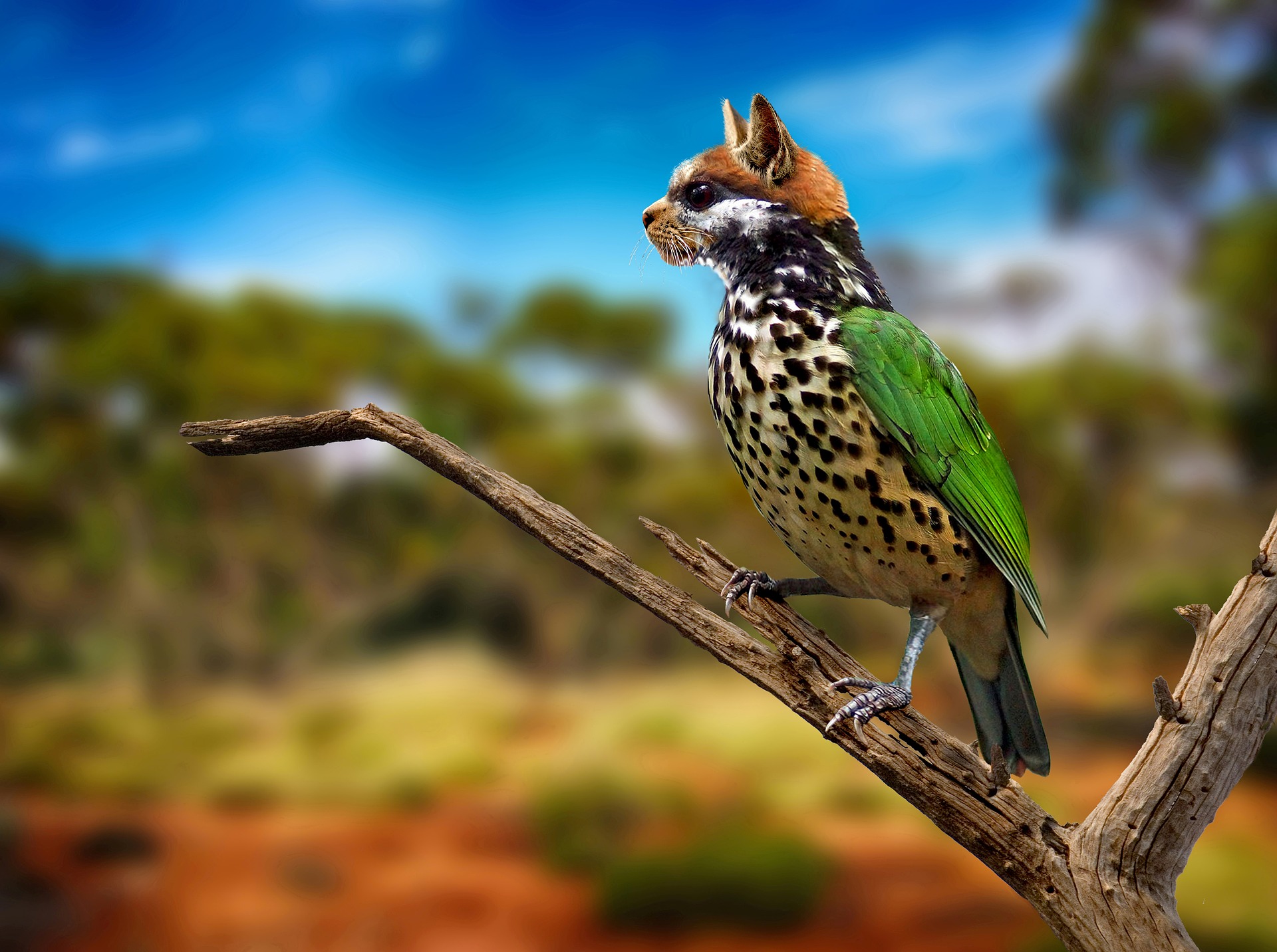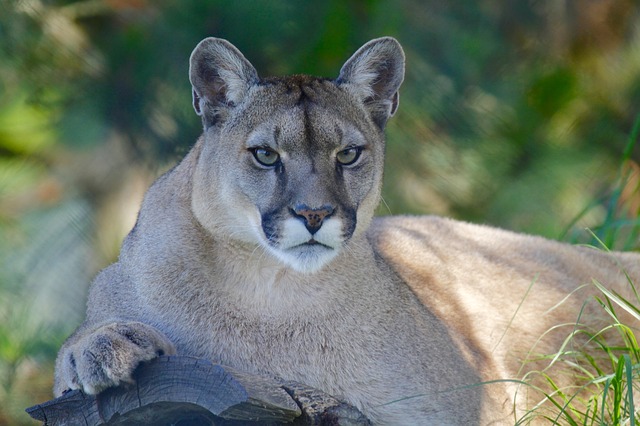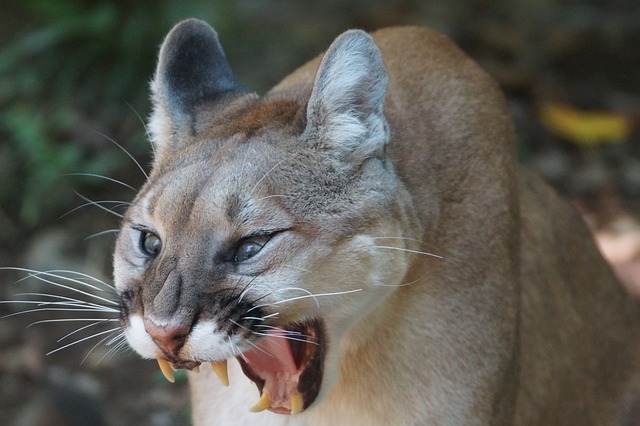Structures
The Variety of Life
MINDS ON
Amazing Creatures are All Around Us!!
Click on the image below of the Pacific Northwest tree octopus to learn more about this endangered species!

by www.zapotopi.net
Resources, such as the CRAAP information above, can be found in the Resource Room. This area will provide access to various resources that will help you throughout the course. Throughout the activities, you will be reminded to visit the Resource Room to find additional information to help you with your assignments and tasks.
ACTION
Ligers and Tigons and Grolar Bears, Oh My!

OK, maybe this image is Photoshopped, but truth can often be stranger than fiction! Click on the cat-bird image above to explore a list of hybrid animals that are said to actually exist.
Even if that cool cat-bird doesn't exist, scientists are continually learning more about the species with which we do share the planet. This is one of the reasons why a robust classification system is so important in Biology. Not only does the system need to include information we already know, but we have to ensure that new information can be incorporated, as well.
Did You Know?
Taxonomy
Take a look at the following images of Canada's largest and most powerful wildcats:
You may notice that each of these cats looks very similar and has the same description. This is because they are all the same animal! The common name used for this cat is often dependent on the area in which you live. People in Ontario normally call this animal a cougar, while people in British Columbia may refer to this cat as a mountain lion. Having multiple names for the same animal can certainly become confusing! This is why a system that gives each organism a unique name would be very useful. A consistent naming system would allow people to understand which species are being discussed no matter where they are from. This is what taxonomy is all about.
The Father of Taxonomy
Carl Linnaeus was a Swedish botanist, physician, and zoologist. Instead of naming species based on their habitat, which was often the norm in naming systems, he decided to create a system that focused on the organism, itself. Using morphological attributes, Linnaeus created a naming convention that is the foundation of the system we still use today. This system is referred to as Linnaean binomial nomenclature. Binomial nomenclature essentially means a two-term naming system. You will see more about this system and its associated rules in the next section.

How Does it All Work?
Each level in the hierarchy is called a taxon.(definition: A taxonomic group of any rank. The plural of taxon is taxa.) Today, biologists use eight different taxa to describe all living things, and they become more specific as you move from domain (definition:The most general taxonomic rank of organisms in the three-domain system of taxonomy.) to species.(definition:A group of closely related organisms that are very similar to each other and usually capable of interbreeding and producing fertile offspring. It is the most specific rank of organisms.) Linnaeus' genus (definition: A taxonomic ranking that includes species that are structurally related. The plural of genus is genera.) and species are the two most specific levels in the classification system.
As you explore the next video, look for details about the hierarchy of the system. While watching, pay particular attention to the differences between the three domains and the various kingdoms.(definition:Second most general taxonomic rank directly below domain.) Consider concepts such as feeding strategies (autotroph (definition: An organism capable of synthesizing its own nutrients from inorganic substances.) and heterotroph),(definition: An organism unable to manufacture its own food. It must obtain nutrients by the intake of organic substances from other sources.) habitats, and general morphology. The number of cells that organisms are comprised of (unicellular(definition: Organisms composed of a single cell.) or multicellular)(definition: Organisms composed of two or more cells.) will also be mentioned.
Ancestry
Binomial nomenclature not only provides unique and specific names for all organisms, it will also provide information on how organisms are related. Taxonomic levels or ranks are based upon shared characteristics. This means that the more levels that two organisms share, the more closely related they are.
Take a shot at the following interactive to see if you can determine which two organisms are the closest relatives.
Ancestry
Tree of Life
Another way to show relationships using taxonomy is through phylogenetic (definition:The evolutionary development or history of a species.) trees. A phylogenetic tree is a visual representation of the relatedness of different species.
More About Taxonomy
The most current taxonomic hierarchy uses the six kingdom system developed in the 1990s. Older systems used a five kingdom system, with Monera (or Prokaryotae) taking the place of both Archaebacteria and Eubacteria. This separation of Monera was initiated by genetic comparisons that indicated that the ancient bacteria (Archaebacteria), had different structures and very different ways of producing energy than the true bacteria (Eubacteria). We will concentrate on the six kingdom system, but don't be surprised to see the five kingdom system mentioned in various resources.

by Life 5th Ed. (Sinauer)
In this activity, you have been introduced to the main taxa only. As the differences between certain organisms can be very minute, subtaxa have been created to allow biologists to more precisely classify organisms based on these subtle differences. Subphylum, superorder, and subfamily are some examples that are often used to aid classification.
Want to Learn More?
This video explores all the main ideas you have just learned about, but goes into more detail about Linnaeus and his hierarchy system. In addition, the classification of a single organism is described from domain to species. It is included because each taxa is explained. The information is presented in an interesting way, so take a look! It'll also give you a sneak peek at some of the important features of many of the organisms you will learn about in this course.
 Self-Check
Self-Check
You have just been presented with a lot of information. Try this self-check quiz to see how well you understand the main concepts!
- All organisms are grouped into these, which range in specificity.
- taxa
- bio categories
- twenty kingdoms
- two main genera
taxa
- The identification, naming, and classification of organisms is called:
- genus method
- Linnaeus method
- taxonomy
- evolution
taxonomy
- Which kingdom contains species believed to be more ancient than bacteria?
- Archaea
- Plantae
- Animalia
- Protista
Archaea
- Which of the following follows the rules of binomial nomenclature?
- Panthera Pardus
- Canis lupus
- Homosapiens
- Canis lupus
Canis lupus
- What is the broadest of all the taxa categories?
- phylum
- kingdom
- domain
- order
domain
- Why is binomial nomenclature important for biological classification?
- It allows scientists to disregard common ancestors.
- It encourages scientists to use common names.
- Kingdoms are no longer necessary in classification.
- It provides all species with a specific name.
It provides all species with a specific name.
- Carl Linnaeus is known as the Father of:
- Evolution.
- Taxonomy.
- Ancestry.
- Luke Skywalker.
Father of Taxonomy
- Which are more closely related?
- Panthera pardus and Taxidea taxus
- Canis lupus and Canis latrans
- Lutra lutra and Canis lupus
- Lutra lutra and Taxidea taxus
Canis lupus and Canis latrans
What Does it All Mean?
Taxonomy is the cornerstone of biology. It provides a naming system that allows scientists from anywhere on this planet to identify species using a universal language. In addition, taxonomy is able to show ancestry based on shared taxa. Linnaeus, through his work with taxonomy, was able to bring order to an often chaotic biological world.


